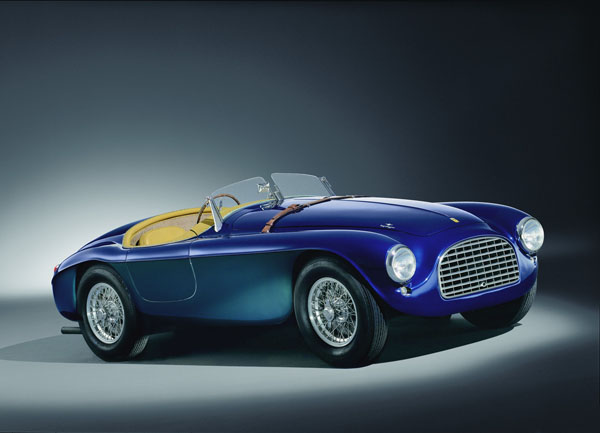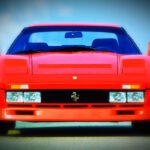After a five-year break in activity because of World War II, Enzo Ferrari’s links with Alfa Romeo were severed, and he resolved to start building his own cars for the first time. His first chief engine designer was Gioacchino Colombo, who produced the classic V12 engine that was to be the mainstay of Ferrari road cars, in so many different forms, for a great many years to come. The original V12 engine was a 1500cc single overhead cam design, first seen in 1947, and cars using it were known as 125s. The first such Ferraris were a two-seater sportscar, and a new Formula One car.
Although Colombo’s influence persisted at Ferrari into the 1960s, in 1950 he left the company, where he was succeeded by Aurelio Lampredi. In the meantime the V12 engine was enlarged to 1955cc, and fitted into a car with a very stark style of sportscar body. Known as the Tipo 166, it was the first Ferrari on sale to the public and gave awesome performance from its 104kW 2.0-litre V12 engine. Both rare and expensive, it set the tone for all future Ferrari models. Its cycle type wings could be removed, along with the headlamps, and it could be used for Formula racing. It was quick and competitive, notching up many successes, especially in long-distance events.
After Biondetti’s car won the 1948 Mille Miglia, the model was given the suffix ‘MM’ to its title. This car had a three-Weber carburettor and a 112 kW-at-7000rpm-version of the 60-degree V12 power unit. Its chassis was made from oval-section steel tubes, and featured double wishbone independent front suspension, with a transverse leaf spring, while the rigid rear axle was sprung on half-elliptical leaf springs, with radius arms for location.
There was no synchromesh in the transmission, but there were hydraulic brakes. All enveloping bodywork was produced for the 166 by Carrozzeria Touring, and the car was capable of 201 km/h. A later version of this car with an enlarged engine was the 195 Inter, and this was soon succeeded by the 2562 cc 212 Inter of 1951, with a 127 kW engine. Shorter wheelbase types became known as the Sport, or Export, models.
All Ferrari road cars are titled in numbers and letters. Over the years, this system has become very confusing and not always logical. For the first cars, however, the vehicle type number approximated to the capacity of one engine cylinder in cubic centimetres. But from 1957, the system used instead indicated the engine size, in litres, as well as the number of cylinders. Except when it didn’t … !
The famous Prancing Horse logo first appeared in 1929 when Enzo Ferrari left Alfa Romeo to form his own racing team, Scuderia Ferrari, and was able to concentrate on designing and developing, in conjunction with his team of engineers, their next generation of cars.










